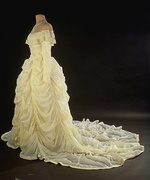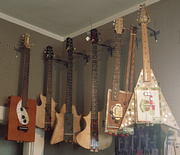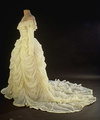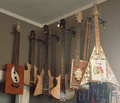Can a sport be considered as rare as an antique? Perhaps it can if the sport is ballooning, which has seen many ups and downs (pun definitely intended) due to the special nature of the sport and the scarcity of actual balloon manufacturers.

I recently attended my first Great Balloon Race, which has been filling the skies over Reno, Nevada, with balloons since 1982. In its first year there were only 20 balloons. Reportedly, the average number of pilots attending the event has decreased in the past few years, but on the day I attended, I saw 87 billowing balloons take to the air.
The Reno race is not an isolated occurrance. The Albuquerque International Balloon Fiesta started with 13 balloons in 1972 and is predicted to have 700-plus balloons in the air for this year’s flight. Balloon festivals also take place in many other states, including Mississippi, Missouri, and Texas.

As I walked between the roar of the flames and the hum of the motors, I saw balloons rise like jellyfish floating to the surface of the ocean. It was hard for me to grasp that this event was actually a competition. The painterly sky, speckled with a rainbow of colors against the early orange light, seemed to be much more like performance art than a heated contest.
The movement of the balloon is a collaboration between the pilot’s ability to read air currents and the force of the wind. This tension between human skill and natural forces makes for a more meditative experience for spectators on the ground, who can only marvel at the balloons floating over their heads. While football and rugby fans might be disappointed by the lack of testosterone and brute activity in this airy sport, there is plenty of drama to keep you on the edge of your seat—there’s more than meets the eye when it comes to flying a hot-air balloon.

The Dawn Patrol starts things off before the sun shares its first rays with the vast Nevada desert. Those of us on the ground are given a light show by the fires illuminating each of the five balloons in a sequence that mimics the rhythms of a dance; there is even accompanying music. Then, off they go, guided by special navigation lights attached to their baskets, out into the deep black sky to report their observations of wind currents, to make weather predictions, and to relay elevation measurements to the pilots.
This sort of information is key to the art of ballooning. It’s a bit like attending a live auction—the changing winds are like a rival bidder, injecting unpredictability into an otherwise orderly affair. Pilots must know how to react and maneuver their balloons through a variety of conditions which they encounter literally on the fly. As pilot Greg Taggart said, “It’s not just a sport, it’s an art and a science.” This mix seems just fine with the small and unique community of balloon pilots. “It brings me joy,” Taggart adds, “and I enjoy sharing that joy with other people.” Those who stay in the sport are uniformly passionate about it. They’re people just like Greg, who didn’t expect to still be ballooning 30 years after their first ride. Hey collectors: sound familiar?

 From World War II Parachute to the World's Most Romantic Wedding Dress
From World War II Parachute to the World's Most Romantic Wedding Dress
 Love at First Kite: How Pizza and Pente Led to One Oklahoman's High-Flying Obsession
Love at First Kite: How Pizza and Pente Led to One Oklahoman's High-Flying Obsession From World War II Parachute to the World's Most Romantic Wedding Dress
From World War II Parachute to the World's Most Romantic Wedding Dress The Blues Rocker's New Secret Weapon? An Electric Cigar Box Guitar
The Blues Rocker's New Secret Weapon? An Electric Cigar Box Guitar Mari Tepper: Laying it on the Line
Mari Tepper: Laying it on the Line Nice Ice: Valerie Hammond on the Genteel Charm of Vintage Canadian Costume Jewelry
Nice Ice: Valerie Hammond on the Genteel Charm of Vintage Canadian Costume Jewelry How Jim Heimann Got Crazy for California Architecture
How Jim Heimann Got Crazy for California Architecture Modernist Man: Jock Peters May Be the Most Influential Architect You've Never Heard Of
Modernist Man: Jock Peters May Be the Most Influential Architect You've Never Heard Of Meet Cute: Were Kokeshi Dolls the Models for Hello Kitty, Pokemon, and Be@rbrick?
Meet Cute: Were Kokeshi Dolls the Models for Hello Kitty, Pokemon, and Be@rbrick? When the King of Comedy Posters Set His Surreal Sights on the World of Rock 'n' Roll
When the King of Comedy Posters Set His Surreal Sights on the World of Rock 'n' Roll How One Artist Makes New Art From Old Coloring Books and Found Photos
How One Artist Makes New Art From Old Coloring Books and Found Photos Say Cheese! How Bad Photography Has Changed Our Definition of Good Pictures
Say Cheese! How Bad Photography Has Changed Our Definition of Good Pictures Middle Earthenware: One Family's Quest to Reclaim Its Place in British Pottery History
Middle Earthenware: One Family's Quest to Reclaim Its Place in British Pottery History Fancy Fowl: How an Evil Sea Captain and a Beloved Queen Made the World Crave KFC
Fancy Fowl: How an Evil Sea Captain and a Beloved Queen Made the World Crave KFC
Maribeth…Such an artful work of prose! I love the way you’ve made the connections between the auction and ballooning. The beauty of hot air balloons always raises my awe and joy. Thanks for your post.
Great article, Maribeth. Loved the pictures, too. Really enjoyed it. Thanks for sending it to us Adrienne.